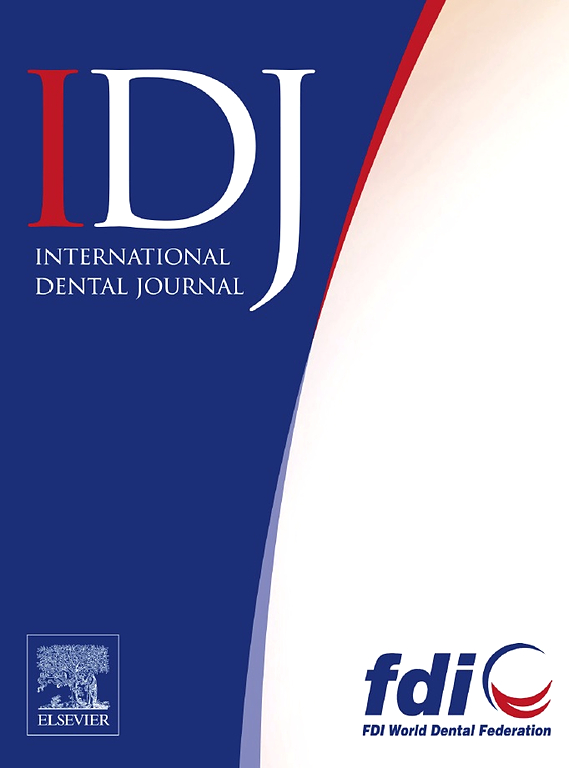The Finite Element Analysis of the Impact of Ferrule Height and Post-Core Materials on Stress Distribution in Incisors
IF 3.7
3区 医学
Q1 DENTISTRY, ORAL SURGERY & MEDICINE
引用次数: 0
Abstract
Objective
Ferrule heights and post-core materials are key factors for post-core restorations, and the interaction between them needs further investigation. This study used finite element analysis to evaluate the stress distribution of post-core models with different materials and varying ferrule heights.
Methods
A 3-dimensional finite element model of the maxillary central incisor was constructed, along with 3 additional groups with different ferrule heights: 2 mm, 1 mm, and 0 mm. Meanwhile, various materials were designed to form the post-core: Zirconia, Titanium, Fiberglass, PEEK, and CFR-PEEK (PEEK reinforced by 30% carbon fiber). A 100 N load was applied at an angle of 45° with the tooth's longitudinal axis on the palatal surface of the crown. The peak von Misses (VM) stress values were recorded.
Results
As the ferrule height increased, a stress reduction was observed at post-core and post-cement interfaces, while the stress in root and cement interfaces increased; meanwhile, the peak VM stress of the post-core decreased among all groups, while that of rigid material groups (Zirconia/Titanium) decreased more significantly; in addition, the peak VM stress at post-core and cement interfaces increased, and that of the 0 mm ferrule PEEK group was the highest.
Conclusion
Ferrule heights and post-core materials affect stress distribution on post-core restorations. A sufficiently large ferrule height can effectively compensate for the stress concentration of highly rigid materials, and PEEK post-core should be carefully used in 0 mm ferrule cases.
Clinical relevance
This study would provide suggestions for dentists to choose appropriate post-core materials according to various ferrule heights.
卡箍高度和桩核材料对门牙应力分布影响的有限元分析
目的卡箍高度和桩核材料是影响桩核修复的关键因素,两者之间的相互作用有待进一步研究。本研究采用有限元方法对不同材料和不同卡箍高度的桩核模型进行应力分析。方法建立上颌中切牙的三维有限元模型,并将卡套高度分别设置为2 mm、1 mm和0 mm 3组。同时,设计了各种材料来形成桩核:氧化锆,钛,玻璃纤维,PEEK和CFR-PEEK (PEEK由30%碳纤维增强)。在牙冠腭面以牙纵轴45°角施加100 N载荷。记录峰值von mises (VM)应力值。结果随着卡箍高度的增加,桩核和后水泥界面应力减小,而根和水泥界面应力增大;同时,各组桩核的VM峰值应力均有所下降,其中刚性材料组(氧化锆/钛)的VM峰值应力下降更为明显;桩核和水泥界面处VM应力峰值增大,其中0 mm套圈PEEK组VM应力峰值最大。结论卡箍高度和桩核材料影响桩核修复体的应力分布。足够大的卡套高度可以有效补偿高刚性材料的应力集中,在0 mm卡套情况下应谨慎使用PEEK桩芯。临床意义本研究可为牙医根据不同卡箍高度选择合适的桩核材料提供建议。
本文章由计算机程序翻译,如有差异,请以英文原文为准。
求助全文
约1分钟内获得全文
求助全文
来源期刊

International dental journal
医学-牙科与口腔外科
CiteScore
4.80
自引率
6.10%
发文量
159
审稿时长
63 days
期刊介绍:
The International Dental Journal features peer-reviewed, scientific articles relevant to international oral health issues, as well as practical, informative articles aimed at clinicians.
 求助内容:
求助内容: 应助结果提醒方式:
应助结果提醒方式:


